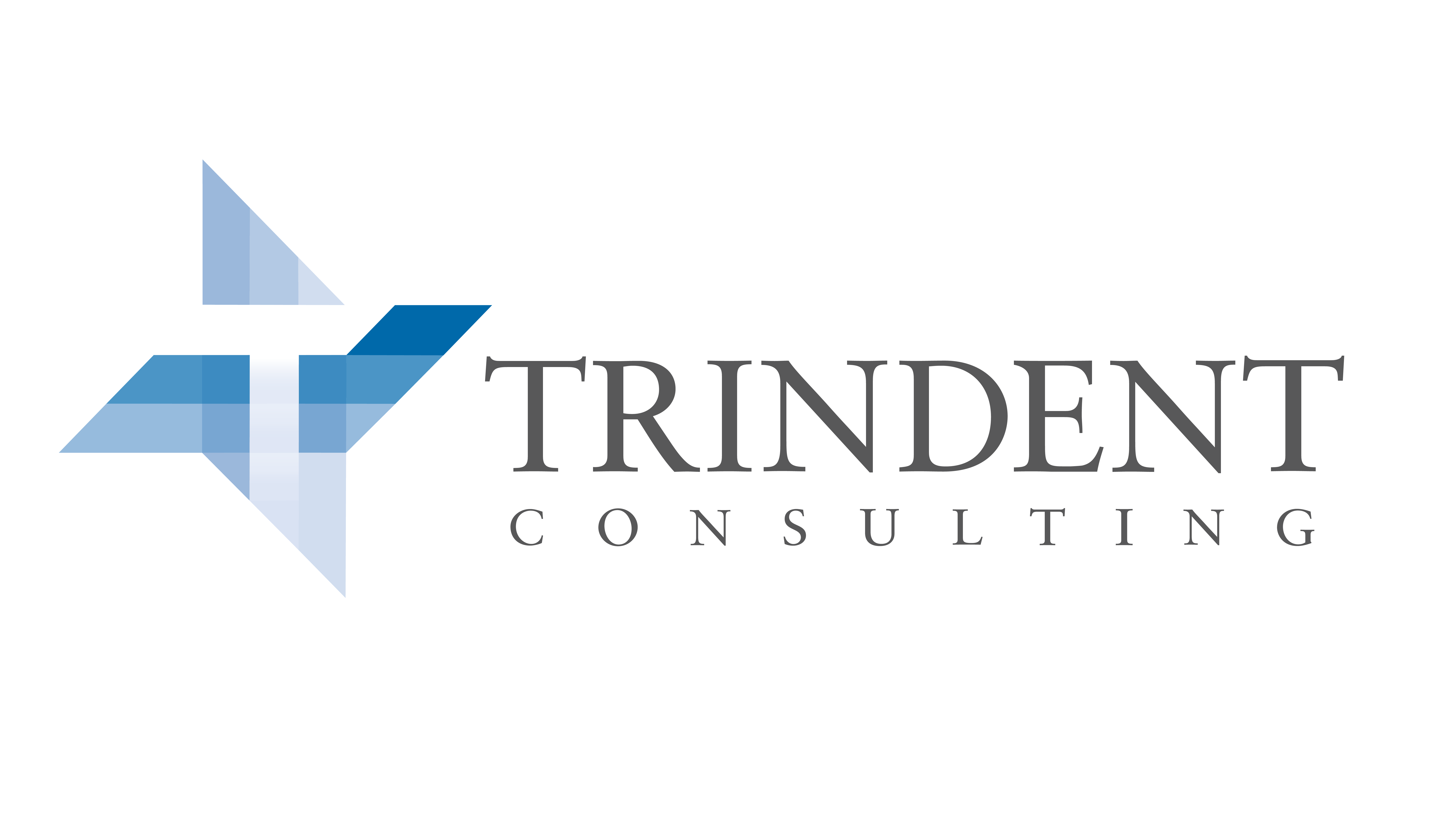Discovering Opportunities in Maintenance
By Adrian Travis
At Trindent Consulting, our oil and gas clients are constantly looking for ways to be more efficient. The average maintenance technician in the oil and gas industry is only about 35% utilized. Put another way, 65% of maintenance labor hours are lost forever, for a variety of reasons. In this article, I will try to clarify some of the common reasons why this occurs. Given the experience level, seniority and scarcity of welding, hydraulic, electrical, millwright or other types of expertise in the oil and gas industry, it is hard to imagine why organizations struggle to extract greater benefit from their maintenance human capital. There is something that can be done to increase the portion of the day that your internal or contract maintenance work force spends ‘time on tools.’ Discovering the 7 opportunities in maintenance is a great place to start:
1. ‘Shot-gunning’
Imagine a work order with a bill of materials that consists of 14 parts. Often when the technician takes the asset apart to make the repair, there are only a few items which warrant the consumption of a repair part. Most repairs only actually require a fraction of the parts listed on the bill of materials. The honest reason for why parts are ‘shot-gunned’ or over-installed is that it’s very difficult and time-consuming for a maintenance technician to return unused parts to the warehouse. Candidly, when it comes to technicians – they love to install unnecessary things. In our estimates over the last 11 years, maintenance organizations can save between 7-11% of their consumption by installing reverse logistics processes to make it easier to return unused parts. The time and money lost installing things that were not needed in the first place can seriously impair your overall repair and maintenance budget’s impact on reliability.
2. Requisition Loss
Simply defined, requisition loss is the time spent ordering, locating, pulling and checking on status related to parts, tools, consumables and materials. Any time spent by highly qualified maintenance technicians on these types of activities is typically a misuse of the skill set, and in some cases, with an inefficient interface, it is impractical for maintenance technicians to become proficient in what is essentially a data querying or data input skill.
3. Parts Availability Loss
In most organizations, there is some component of the maintenance backlog which is due to parts that are out of stock or on back order. This is a direct expression of how well the maintenance supply chain is performing. If the parts are not ready, the job cannot be scheduled. A reminder that for every percentage of parts on back order, the effect on work order availability is multiplied by the average number of parts on the repair bill of materials (BOM). For this reason, a 99% or greater parts availability statistic is desirable.
4. The Maintenance System Itself
Every oil and gas organization utilizes a computerized maintenance management system or (CMMS). Depending on how user-friendly it is, it will have descriptions of parts, asset histories, and a good interface that will tell the maintenance technician what the ‘story’ is with a particular asset prior to repair. This reduces troubleshooting time greatly if one can tell the reason for failure, average time between failures, and history of how reliably an asset is performing. Additionally, if the CMMS has a feature which denotes whether the particular failure is covered by a warrantee, there is the potential for millions of dollars in parts expenditure avoidance via warrantee dollar recovery. A fully utilized CMMS can reduce time and expense in maintenance.
5. Lock-out, tag-out
Essentially because operations may not have issued the correct permits or has not locked out and tagged the asset, the maintenance technician is prohibited from conducting the scheduled work due to lack of planning. In our experience this is typically a cultural artifact that if left unmanaged, can result in a 5-7% reduction in maintenance productivity. Essentially the operations team (without a valid reason) tends to impose dominance by controlling access to the asset.
6. The Godfather Effect
All maintenance technicians are not equal. There are some that have an expertise across a wide range of assets, and a depth of experience that allows them to expeditiously fix things. The problem is that these individuals are surrounded by technicians of lesser capability that lean on the ‘godfather’ heavily to troubleshoot and perform more complex work orders. A good way to determine if there are skill bottlenecks in the maintenance work force is to perform a skills assessment. See Trindent's previous blog articles on how to create your own 'Skills Matrix'.
7. Planning Deficiencies
Work orders are typically set up and planned by a maintenance planning department. The level of planning may be poor, with inaccurate bill of materials for the job, and a lack of understanding and specificity about what inspection, maintenance repair needs to be conducted. Typically planning wastes are rectifiable by having a good planning feedback process when jobs are mis-estimated, vague or lacking the best possible preparation.
We define wrench time as value-added maintenance where the work order is moving towards completion, unobstructed by any barrier. If wrench-time is not measured and a clear expectation set, you will be surprised by how low it can go. If any of these seven opportunities in maintenance are present in your repair and maintenance process, they will express themselves in the form of a lower-than-optimal ‘wrench-time’ statistic.
The Power Of Feedback

A common theme Trindent sees in our financial services engagements is time lost to excessive rework at the end of an application process cycle. In an insurance organization, multiple hand-offs between departments occur as a regular part of the cycle, from the intake of new applications to the final issuing of a policy. However, one crucial part of the cycle that tends to get overlooked is quality control.
What Trindent has found is that when there are no proper quality control steps built into the process, verification and correction ends up becoming the responsibility of the last department to touch the application before it heads out the door, creating a bottleneck that leads to longer processing time and decreased turnaround. Gatekeepers at the end of the process become de facto checkers of quality and fixers of errors – a responsibility that’s not factored into their output targets and one that goes well beyond their mandate. Often, department managers are not aware this a problem because it’s become status quo and the lost time it creates was long ago factored into the service level.
Quality Control Alone Isn’t Enough
The obvious solution to improve this inefficiency
would be to establish quality control checks earlier on in the process; for
example, the implementation of checklists or verification steps to ensure that
work is complete and accurate before an application moves to a subsequent
department. However, implementing quality checks isn’t a
complete solution; it’s a only first step that should lead to addressing the
underlying causes of the error, and this is where the power of feedback comes
in.
When there is no system in place to give
feedback to the person or team making the errors, then the errors will continue,
as will the time lost to verification and rework bottlenecks. Finding the errors early in the process is
good, but there needs to be a way to prevent the errors from persisting. Feedback is the key to this.
Feedback plays an important part in Active Management and allows team leaders to connect with their staff on performance. While feedback can – and should – be used as a tool for positive reinforcement, in cases of errors and rework it is a communication tool to be used to ensure mistakes don’t continue.
When a quality control check uncovers an
error, an active manager should use feedback to:
- Let their employee or team know
the error has been made. If someone is
unaware they’ve made an error, they won’t know to avoid repeating it. - Work with the employee or team
to understand why the error occurred.
Was it a one-time mistake? Is
there a flaw in the process that needs to be addressed? Is there coaching or training that should
take place? - Implement changes to avoid
repetition of the error. - Follow up to make sure the
underlying cause of the error has been eliminated. At this point, feedback can again be used as
a positive reinforcement tool to motivate the employee or team to adopt the
improved, error-free behaviour.
If quality control is 80% in the 80/20
rule, then feedback is the remaining 20%.
This last piece of the puzzle is designed to facilitate continuous
improvement in efforts to diminish errors and decrease time lost to rework.
In past engagements, Trindent clients have seen a reduction in error rates, increase in quality, and better overall turnaround time and customer satisfaction with active management training for their team leaders.
Click here to find out more about how Trindent can help your organization harness the power of feedback.
Good Customer Service vs Average Handling Time

In Trindent’s financial services call center
productivity engagements, we often work with clients who believe that call
centres can’t pursue efficiency without negatively impacting the quality of customer
service.
However, good customer service and efficiency don’t
have to be mutually exclusive. If
addressed correctly, a call center can have both.
Understanding Your Call Center Metrics
Even with smart IVR routing, the volume and complexity
of the calls coming into a bank or insurance call centre are uncontrollable
variables. A high volume of complicated calls
can negatively affect call center service levels, and customers service
representatives are constantly being pushed to stay within Average Handling
Time KPI targets to avoid that. However,
without understanding the underlying inefficiencies that exacerbate the length
of each transaction, this negatively impacts the level of customer service that
call center agents are able to provide without addressing the real issue.
To understand where inefficiencies in a call center
transaction can be found, the first step is to break Average Handling Time (AHT)
into its components.
AHT is measured when Average Talk Time (ATT), Average After-Call Work Time (AWT), and Average Time on Hold (ATH) are added together. All three AHT components contain the value-add activity of addressing customer issues, but often also include non-value activities that could be streamlined or avoided altogether.
AHT = ATT + AWT + ATH
Knowing Where to Look
In our financial industry call centre engagements,
Trindent has consistently found a number of common inefficiencies that affect
AHT metrics:
- Skills gaps and lack of training in
customer service representatives that lead to unnecessary escalations, excessive
call transfers and unneeded rework, which has an affect on all three components
of AHT; - Talk time beyond addressing customer needs
in an attempt to increase customer satisfaction, which affects ATT; - Lack of standardized processes or policies
for issue resolution, which affects AWT and ATH; - Lack of documentation standards, which affects
AWT; and - Lack of individual CSR performance
visibility to management, which affects all three components of AHT.
Getting Results
Once Trindent addressed these inefficiencies and
implemented process improvements, CSRs found themselves able to resolve the
same volume and complexity of customer requests in a significantly more efficient
manner. This allowed them to stay within
AHT targets without affecting customer service.
With the right approach, call centers don’t have to
choose between meeting Average Handling Time targets and good customer service.
Click
here
to learn more about how Trindent can Make It Happen ™ for your organization.
Managing Customer Expectations To Control Call Center Volume

A common KPI for financial industry contact centers is the Service Level, whose targets can be found in the Service Level Agreement (SLA) committed to customers. The SLA aims to maintain a certain level of service, and its targets are expressed as a percentage of inbound calls answered within a given timeframe (e.g. 80% of questions will be answered within 20 seconds).
Industry standards vary depending on the type of business, the type of callers it draws, and what the calls are about. Nonetheless, Service Levels allow organizations to ensure their call centers are maintaining an optimal level of service to keep client satisfaction sufficiently high. They also create an opportunity for companies to measure themselves against their competitors and give them ongoing motivation to strive for Service Level improvements.
There are numerous variables that affect the Service Level, including Average Talk Time (how long each call lasts), After-Call Work (how long it takes an agent to complete necessary tasks after each call) and Scheduled Adherence (the percentage of a scheduled shift that an agent is available for calls). These variables, among others, are ones that call center representatives are often coached to improve.
However, there is one other simple but often overlooked idea
that can be a quick win for call centers to consistently stay within their
Service Level targets.
Controlling the Controllable Volume of Inbound Calls
Incoming call volume is commonly perceived as an impossible variable to control since it is driven by external factors. However, throughout its various engagements with financial industry clients, Trindent has found a recurring pattern of excess customer repeat calls that invariably led to a failure of call centers to stay within acceptable Service Levels. For contact centers that do not have an active repeat call reduction program, for example, we have typically seen approximately 20-30% of total calls are repeat calls.
Although there were a number of reasons for the repeat calls, the majority were follow-ups from customers whose expectations were not properly managed on the original call. Customers were not told, for example, how long it would take to get a certain request processed, so they would call back to check on the status. Or, in cases where a customer request touched multiple departments, there would be a lack of coordination or miscommunication between them as to who is responsible for answering queries, leaving callers to cycle through different call centers in confusion.
In both cases, the volume of repeat calls could have been
avoided by setting proper expectations with the caller at the outset.
“One and Done” - Managing Expectations
Managing client expectations should be an organization-wide
effort to ensure that all customer communication –written and verbal – set out a
reasonable expectation of how long a customer can assume a process to take. For larger companies with multiple call
centers, it’s also important to give customers clear guidelines on what
department they should be reaching out to.
Simply put, in order to help call centers stay within Service Level targets, customer interaction needs to have a “one and done” approach. Properly messaged communications take care of customer needs in one call, which avoids the repeat calls that put pressure on contact centers and their ability to meet SLA.
Click here to read more about Trindent’s wholistic approach to improving call center processes by finding and remedying inefficiencies like excess incoming call volume.
The Tenets of Process (Re-)Design
Trindent’s approach to profit improvement is based on solving complex problems, where we drive improvements in three key areas:
- Process, which refers to the
way things are done; - Systems, the tools used to
manage a business; and - Behaviors, the actions taken
based on information provided by the System.
This article will focus on processes, which can be classified into a number of varieties: Legacy processes that are colloquially described as “the way things have always been done” and are often highly inefficient; undocumented processes based on institutional knowledge and experience that are highly variable and poorly managed; and finally, well-documented standard processes that can be measured and continuously improved. The first two are what we commonly find in our initial assessment of a client’s operation, the last one is what we’re striving for.
One of the key deliverables of an assessment is a deep analysis of the organization’s end-to-end processes. Working alongside our clients, this exercise uncovers and quantifies constraints and variances. While clients are often aware of these issues, even if anecdotally, it can be difficult for them to fully understood the impact, let alone fix it. As we move from assessment to engagement, there will be dozens of method changes developed and implemented in collaboration with our client’s project team.
This is done using a structured, data-driven approach to process design, one based on three tenets:
- Discrete, actionable changes
that address specific pain points in the process; - Quantification of the impact
and benefits based on rigorous analysis; - Clear implementation plans with
timelines and accountable parties.
First and foremost, our solutions are based
on discrete, actionable steps. From experience, consolidating process changes
only injects confusion into the new process. The additional complexity also
makes the approval process more challenging, as the proposed change may infringe
on multiple stakeholders. For these reasons, method changes should instead be
broken down to specific process steps with a singular focus. This also allows
for both rapid implementation and clear requirements when course correcting to
any variance in results. Finally, these changes need to be rigidly documented
to ensure sustainability and business continuity.
Second, we prioritize implementation based
on the P&L impact of proposed changes. This is based on rigorous analysis
and deep industry knowledge that allows us to quantify the impact of
improvements – historically generating between 300-1500% ROI on project fees. As well, this approach allows us to
effectively measure results on a weekly basis – celebrating areas that are
performing at or above target and quickly pivoting to address underperforming
areas. We also install a framework that allows this process to be continued and
carried out elsewhere in the business.
Finally, all of this is done in
collaboration with our clients to produce clear implementation plans that
include timelines and accountable parties. Following implementation, typically
six months after the completion of an engagement, we complete a Sustainability
Audit to ensure results have been maintained, or as often the case, improved
on!
Process redesign, poorly executed, can actually harm both performance and morale within an organization. This can be attributed to process design efforts that include compounded process changes, solutions that lack quantification, and unclear lines of accountability. Trindent’s approach ensures accountability and buy-in at all levels of an organization, resulting in sustainable P&L improvements.
Contact us today to learn more about how our approach to solving complex problems can benefit your organization.
The author of this article - David Kerry, is a Senior Engagement Manager at Trindent Consulting.
Milestone Presentations in Change Management
Change management is one of the most
challenging aspects of being a manager. Combine this with the expectation of
continuous improvement and a general lack of training for new managers, and
it’s no surprise that many change initiatives underperform.
As management consultants, one of the
complaints we often hear when we’re discussing organizational change is that
“we’ve tried that in the past, but it didn’t stick”. This article will explore
this negative outcome to understand the root cause of sustainability issues in project
environments.
In the early stages of a continuous
improvement initiative, it’s important to identify influencers within the project
team who are capable, open to change, and respected by the group. They will be
integral to the sustainability of the project, and should take an active role
both in identifying challenges and in coming up with potential solutions.
Regular status reports and executive updates are a staple of project governance. Trindent’s approach goes one step further and includes three milestone presentations:
- Roadmap: aligns the group on both
benefits and approach and details how we’re going to “cash the check”; - Blueprint: gets commitment from
the staff to the changes, and in sustaining them; - Results Summary: celebrates
results and highlights the work that went into them.
Of these three, the Blueprint milestone is
entirely presented by the client, with no input from the Trindent team. What’s
involved in a Blueprint presentation? There are four sections:
- Historical: a review of the Key
Performance Indicators (KPI) that the engagement is targeting; that is, the
metrics that are being affected by the changes; - Current State: a review of the
Process and systems prior to the engagement; that is, how things were; - Blueprint: the current Process,
System, and Behaviors; that is, how things are now and how they are going to
be; - Future: tying the Blueprint
Process, Systems, and Behaviors back to the results in the form of both
financial and operational metrics, as well as providing Critical Factors for
Sustainability.
The purpose of this milestone is to signify
the official transfer of ownership of the improvements and drive accountability
within employees. This is further reinforced with the attendance of project
sponsors and company executives. For project team members, this is a great
opportunity to highlight their successes and gain exposure to senior leadership.
In summary, the Blueprint describes the state of an organization when an engagement begins, the nature and impact of improvements, and where these changes will ultimately lead in terms of operational and financial results. What makes it a powerful milestone is that the team leading the changes is responsible to present them to their peers and superiors. This is an important milestone in Trindent’s structured, effective approach to profit improvement – and a personal favorite.
Contact us today to learn more about how our approach to solving complex problems can benefit your organization.
The author of this article, David Kerry is a senior engagement manager at Trindent Consulting.
Watch Out For Waste In Repetition
Those of us who have dealt with the day-to-day operations of an insurance company know how repetitive some of the process tasks can be. While in many cases, this is necessary for quality assurance, there is good reason why the repetition has earned notoriety. As Trindent often sees on engagements in the insurance industry, sometimes repetition hides inefficiencies that can have a negative impact on profitability.
Simple, Yet Perilous
One of the best examples of this can be found in the process of validating agents as a sub-section of insurance applications processing. This process deals with verifying that an agent’s credentials are valid and in good enough standing to meet compliance requirements. While validation is essential in ensuring the integrity of an application, this seemingly straightforward process can be plagued with inefficiencies of unnecessary repetition.

How Does It
Become Status Quo?
A lot of the flaws
in insurance company processes – including agent verification – can be traced
back to a disorganized approach in the initial design of the process. Lack of
standardization and poorly developed policies and procedures lead to ambiguity
and poor quality when tasks are first being handled. For example, if no set list of mandatory information
necessary to validate an agent has been established, then it’s likely that the
initial case manager handling the file will not collect all the information
required for validation. When the file
is subsequently handed over to the next agent in the process, they will realize
the information is incomplete and will have to repeat some portion of the data
gathering procedure.
Poor
verification during the intake stage then leads to repetition and rework down
the line, and as the application progresses through this process, it creates a
diminishing trust in the collaboration around it. Front line employees start to perceive the
lack of quality as norm, and repetition as the only quality control solution.
It Can Be
Changed
The cumulative repercussions
of repetition on operational profitability can be significant; but finding and
eradicating the waste frequently proves difficult. The faulty processes are usually so deeply
rooted in everyday operations, they are not easy to pick out.
To start down the road to reducing repetition, inefficient processes need to be identified using structured observation to root out poor design, and to separate value-added from non-value-added activities. An analysis of management operating systems and behaviors of the process participants will further help to identify repetition and find improvement opportunities.
This is the approach
Trindent Consulting uses to address inefficiencies and find improvement opportunities
in processes, systems, and behaviours. We
work with our insurance industry clients to not only identify improvements, but
to implement them and train client staff on how to sustain them. Our typical results include a significant
reduction of handling volumes, along with reduction of handling time, which,
when realized, has an immediate effect on the bottom line.
Click here to read
more about how Trindent’s approach can work for you.
It Pays to be Concise

In the business world, having good writing
skills is essential. Whether you’re a
consultant presenting a work summary to a client, a salesperson pitching a new
lead, or a team leader submitting a report to your CEO, you need to know how to
write in a way that gets your message heard.
You have a finite window to get buy-in from a stakeholder, and you have
to use it wisely.
We commonly believe that “more” means
“better”. More words, more buzz, more
adjectives, more complex language. But when
it comes to writing, the emphasis on “more” can greatly hinder the “better”
because it buries the message underneath layers of bells and whistles.
Anyone can write more, but it takes a
skilled writer to tell their story with less.
Keep it Short and Simple
Knowing when to stop a sentence can be difficult,
especially when it tries to convey a complex subject. Sometimes you simply can’t figure out how to
wrap up a thought. Before you know it, the
piece you’re writing is filled with runaway sentences that have turned into a marathon
read.
When your sentence contains more than 17 words, you risk losing your meaning.
To avoid this, map out your message before you start writing. Think through what you want to say before you write it and have confidence in your message. This will allow your writing to quickly get to the point by reducing the number of words you use. It solidifies the message in your mind, and helps eliminates roundabout phrases and hedging of words.
If you have confidence in your message, you
will know the shortest route to get to it.
How to Separate the Necessary from the
Unnecessary
Many writers make the mistake of thinking “but
it needs to be detailed to be understood”. While some detail is important to put meat on
the bones of your thought, too much detail fogs up your writing. So, the challenge every writer faces is how to
separate the necessary details from the unnecessary ones.
To
start that process, you need to have a clear understanding of two
things: What is my point, and who is my
audience? The answers will determine how
much detail and complexity your writing needs.
When you know a subject well, you can
communicate it simply and concisely; but what happens when your audience
doesn’t have the same level of expertise?
This is where it’s easy for business writers to get into the
“overexplaining with extraneous details” trap.
To remedy this, remember that it takes time and effort to make things sound simple, so give yourself enough time to plan and write. Make sure you understand who your audience is, map out how you’re going to get them to your ultimate message, and adjust the complexity of your writing accordingly.
“If you want me to give you a two-hour presentation, I am ready today. If you want only a five-minute speech, it will take me two weeks to prepare.”
Mark Twain
As a last check, get a fresh perspective
from a colleague not familiar with your content. If they don’t get the point you’re trying write,
go back to the drawing board.
Do More
with Less
Over-complication
and clutter are common hazards in business writing and can bury the story
you’re trying to tell. Take the time to
know your message and understand your audience, and let that inform you on what’s
necessary to
create clear and straightforward content.
The easier you make it for your reader, the more likely they are
to want to read your message.
Cost Management & Optimization for Midstream Companies: Supply Chain Management
By James Greey

In a previous article, we discussed ways for Midstream Companies to increase margins by focusing on reducing operating expenses related to inefficient maintenance programs. This article discusses another key contributor to margin erosion, ineffective Supply Chain Management. For midstream oil and gas companies, Supply Chain Management can be broken down into two main areas: Hydrocarbon management and non-hydrocarbon management.
Hydrocarbon management involves the planning, scheduling, stock control, and custody transfer of hydrocarbon products. With hydrocarbon management, hydrocarbon loss is one of the main causes of margin decrease and can cost midstream companies millions of dollars in lost value each year. There are a number of causes for hydrocarbon loss sediment and water intrusions, inaccurate measurements, retains, and theft to name a few. Best-in-class hydrocarbon loss is under 0.25% loss, while under 0.5% loss is considered achievable for the average company.
To prevent this loss, companies can employ Hydrocarbon Loss Control Programs that focus on Mass Balance. Our team of Hydrocarbon Loss Consultants is experienced in implementing these types of engagements in a cost-effective manner using customizable tools and training material to empower your employees to sustain the results.
Non-Hydrocarbon management is another contributor to margin erosion and there are many causes of inefficiencies. Two of the most common root causes are poor planning and poor inventory tracking.
- Poor Planning: Not having the proper tools, equipment, and parts available when there is an outage can be costly if it results in a slowdown or stoppage of product throughput. Understanding the cost of this downtime, the holding cost of the inventory and the lead time to receive additional inventory is key in making risk-based decisions. Improved planning practices especially as it relates to supply chain management and work management planning can be used to optimize and reduce the direct and indirect costs of inventory management.
- Poor Inventory Tracking: The cost of consumables and parts is often not tracked well; however, a Pareto analysis on the usage of various consumables can often identify opportunities to reduce waste and unnecessary costs. Increased visibility allows for accountability and risk-based decision making. Furthermore, improved inventory tracking can prevent costs associated with stockouts, overstock, and obsolete stock.
By focusing on Supply Chain Management Optimization, midstream companies can achieve more throughput with reduced costs and improved margins. Learn more about how Trindent can Make it Happen in your company
The author of this article – James Greey is a Senior Consultant at Trindent.
Using Cost-Benefit Analysis to Avoid Change Fatigue
By Christopher Lee
The pursuit of perfection, the 5th Lean principle, represents a continuous improvement mindset, where the pursuit of perfection is an ongoing process that continuously evolves. However, if not used properly, this concept can be taken to an extreme and cause change fatigue in an organization.
Organizational change fatigue is defined as “a general sense of apathy or passive resignation towards organizational changes by individuals or teams.” It can be caused by several factors, but usually happens when change efforts are unfocused, uninspired, and/or unsuccessful.
As business landscapes continuously change and the competition continues to be fierce, organizations become agitated and feel like they are missing out if they are not also continuously innovating. While innovation is an important long-term goal, “as humans, we inherently need stability, order, and predictability. When change is always occurring, individuals begin to become overwhelmed, their ability to adapt becomes depleted, and the loss of control and uncertainty skyrocket.”.
Therefore, it’s critical to be mindful of the pace of change in order to allow staff to catch up and keep up. Employees need time to understand and accept new concepts before an organization tries to improve or change those concepts again. Change for the sake of change can become overwhelming and leave your employees apathetic at best and resistant at worst.
What Can We Do?
Change is important, but it’s even more important to prioritize which initiatives have higher priority and are time-sensitive. Staff and leaders have limited capacity and overextending their efforts can be detrimental to their production efficiency and morale.
In order to compare the investment efforts of each initiative and then to prioritize them properly, Trindent recommends the use of a familiar but powerful tool – a cost-benefit analysis. This is a systematic approach to estimate and weigh the dollar value of benefits against the cost, financial and otherwise, that may be incurred in implementing those benefits.
Once the analysis has been performed on each
proposed initiative, they can be assessed and prioritized in orders of urgency,
need, and return on investment.
Conclusion
Organizational leaders need to be cognizant of their teams’ capacity. There is a balance between maintaining operational excellence and over-dedicating resource and time to continuous development initiatives. By using cost-benefit analysis on each proposed project, executives can make informed and impactful decisions on which projects to prioritize.
Instead of overloading employees with one
change initiative after another and risking change fatigue, an informed and
analyzed approach will ensure that your organization continues to evolve
effectively.
Click here to learn more about Trindent’s approach to cost-benefit analysis






